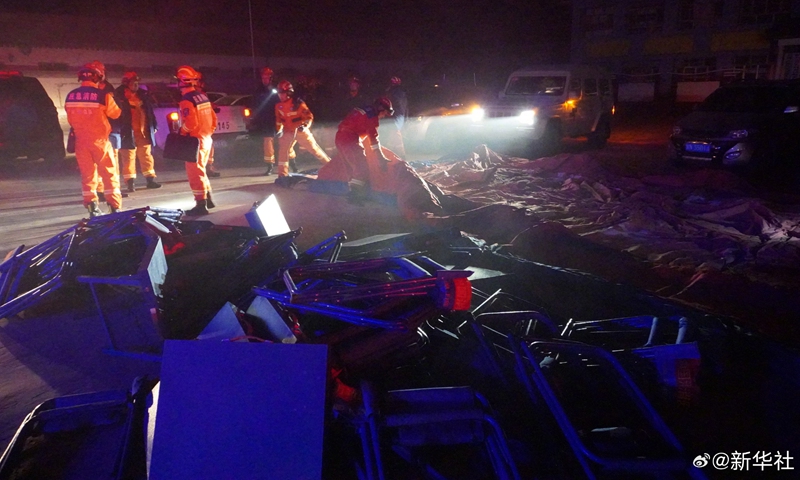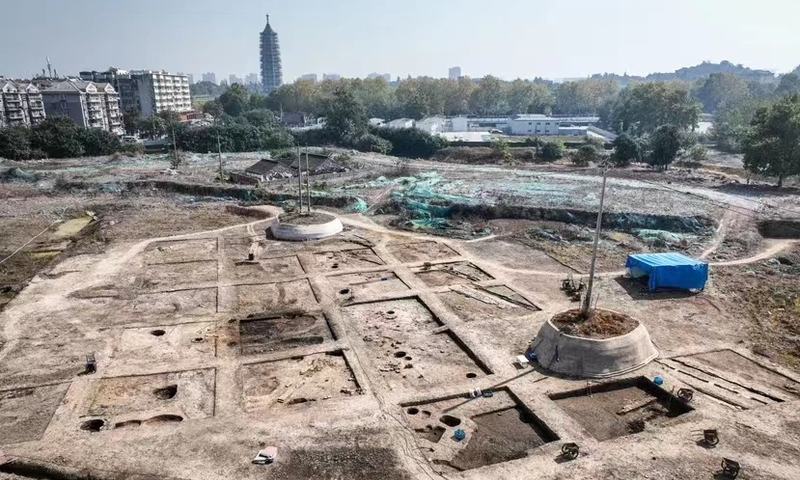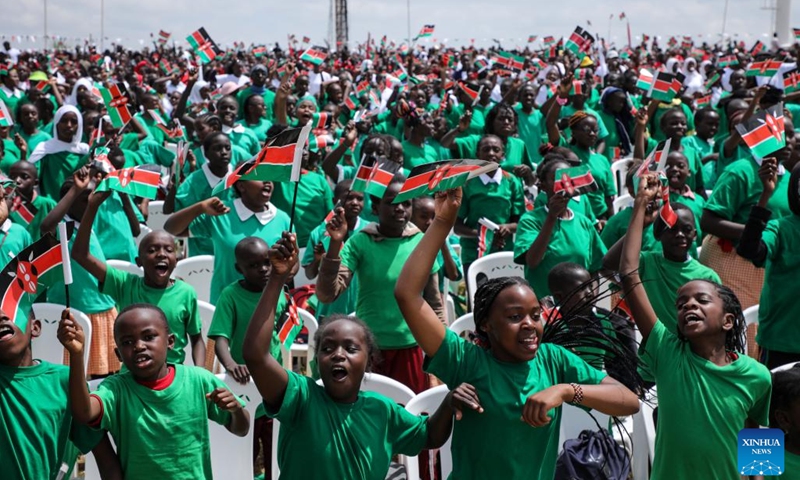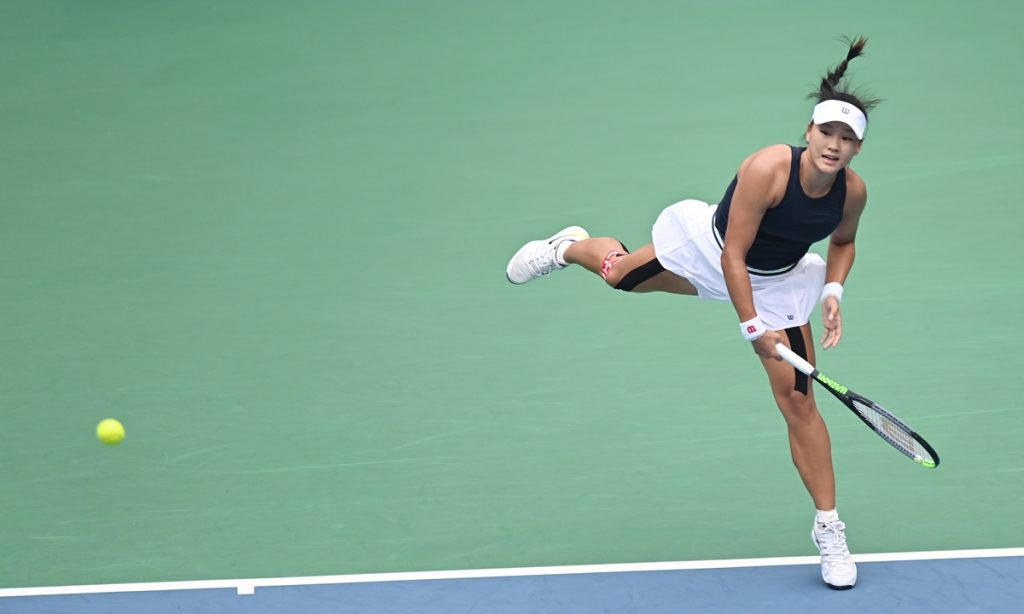Full-scale rescue underway as 6.2-magnitude earthquake in NW China kills 105 in Gansu and 11 in Qinghai

A 6.2-magnitude earthquake struck Jishishan county in Linxia Hui Autonomous Prefecture of Northwest China's Gansu Province on Monday midnight. As of press time, the earthquake has caused 105 fatalities and 186 injuries in Gansu and another 11 were killed in neighboring Qinghai Province.
Chinese President Xi Jinping issued important instructions on Tuesday regarding the earthquake in Gansu, demanding full-scale search and rescue efforts, proper resettlement of affected people, and maximum efforts to ensure the safety of people's lives and property. Premier Li Qiang also issued instructions.
It is the deadliest earthquake in terms of casualties in China following the devastating 2010 earthquake in Yushu, Qinghai Province, and the second-largest in magnitude.
Notably, since the 2010 Yushu quake, the biggest earthquake had also occurred in Gansu Province with a maximum magnitude of 6.6, resulting in nearly 100 fatalities.
Houses and infrastructure related to water, electricity, and roads in and around the epicenter have been damaged to varying degrees.
It has also been found that the earthquake-stricken area in Gansu experienced mountain collapses, and there was displacement in the supports of a local bridge.
"I live on the 16th floor and felt the tremors so strongly. The moment of the earthquake was feeling like being tossed up after surging waves… I woke my family up and we rushed down all 16 floors in one breath," A resident living near the epicenter surnamed Qin told media.
It was freezing cold out there at minus 12 C, and Qin noticed his neighbors also fleeing from surrounding buildings, some wearing down jackets, some wrapped in blankets, and some even bare-chested.
The earthquake also affected the neighboring province of Qinghai. As of 6 am on Tuesday, the earthquake has resulted in 11 deaths and 140 injuries in Haidong city in Qinghai Province.
Some houses have collapsed in counties and districts such as Minhe, Xunhua, and Hualong. Local electricity lines and communication networks are under urgent repair, and efforts in personnel rescue and disaster assessment are still ongoing.
In light of the severe disaster, the State Council's Earthquake Relief Command and the Ministry of Emergency Management have raised the national earthquake emergency response to Level II. The National Disaster Prevention and Relief Committee and the Ministry of Emergency Management have also elevated the national disaster relief emergency response to Level II.
Following the earthquake, a total of 1,440 firefighters from the national comprehensive fire and rescue teams were deployed to the disaster area for rescue efforts. Additionally, 1,603 firefighters from Gansu and surrounding provinces have been assembled and are on standby.
Army units from the PLA Western Theater Command swiftly prepared for emergency response. Over 300 officers and soldiers were mobilized overnight and arrived in the severely affected area by 4 am Tuesday to commence personnel search and rescue operations, road clearance, and other tasks.
According to Gansu earthquake administration, multiple consecutive tremors occurred late at night, with the maximum magnitude reaching 6.2. A total of 140 aftershocks have been recorded, with the largest measuring 4.1 in magnitude.
Areas in other regions including Southwest China's Sichuan Province, Northwest China's Shaanxi Province and Ningxia Hui Autonomous Region, also experienced tremors.
The China Earthquake Networks Center has organized experts to conduct analysis on the seismic activity near the epicenter in Gansu, which occurred in the southeastern part of the province, approximately three kilometers from the nearest fault line - the northern edge fault of Laji Mountain.
Preliminary analysis of the focal mechanism indicates that this earthquake was a thrust rupture.
The active tectonic zone in southeastern Gansu lies in the northern part of the North-South Seismic Belt in China and is an important region on the northeastern edge of the Qinghai-Xizang (Tibet) Plateau. Due to the long-term compression between the Eurasian Plate and the Indian Plate, intense tectonic activity occurs in this region, characterized by the development of numerous deep-seated faults.
Within a 200-kilometer radius of the epicenter of this earthquake, there have been three earthquakes measuring magnitude 6 or higher since 1900. All were either isolated or main shock-aftershock type earthquakes.
The significant casualties this time also stem from the poor seismic resistance of buildings, relatively dense population in affected areas, and the timing of the quake when people are usually asleep and unable to evacuate in time.
The Earthquake Early Warning System, jointly developed by the Institute of Care-life and the China Earthquake Administration, told the Global Times that it had alerted the regions ahead of the earthquake.
It provided warning to the Linxia Hui Autonomous Prefecture located 56 kilometers from the epicenter 12 seconds before the quake, and some 20 seconds to regions adjacent, including Gansu's capital city of Lanzhou.
Preliminary statistics show that domestically manufactured mobile phones, televisions, and other devices equipped with the warning system were able to issue alerts in advance within the affected earthquake zone.



